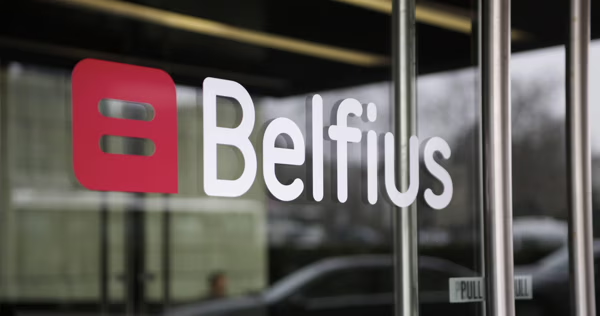MiCA (Markets in Crypto-Assets Regulation) is a new set of rules from the European Union that changes how stablecoins like USDT (Tether) work all over Europe, including in Belgium. USDT transactions are still technically permissible, but stronger restrictions, better banking practices, and increased focus on stablecoins are changing how people and businesses transfer, receive, and change USDT to EUR in the country.
This article presents a full picture of the Belgian stablecoin payment ecosystem, covering the positions of KBC and Belfius Bank and the new choices, with real-world examples and helpful tips for users.
Belgium's Rules Regarding Crypto and USDT
Belgium lets licensed Virtual Asset Service Providers (VASPs) that follow EU Know Your Customer (KYC) and Anti-Money Laundering (AML) standards handle cryptocurrency-to-fiat transactions. By making sure that cryptocurrency transactions can be traced, this framework decreases the dangers of fraud and criminal laundering.
Belgium doesn't accept cryptoassets as legal money, and there isn't a full set of legislation that covers all digital assets. Some restrictions only apply to select locations, though:
- According to the Financial Services and Markets Authority (FSMA), only retail investors can acquire cryptocurrency derivatives.
- The FSMA says that enterprises in Belgium that offer wallet or exchange services must sign up with them.
- Foreign (non-EU) service providers can't lawfully serve Belgian clients unless they set up an EU business or receive a passport from another EEA nation.
These restrictions make things hard, yet they have to be followed. Banks are still cautious to become directly involved because there isn't a unified operational model for stablecoins across the EU. But in Belgium, USDT payouts and collections are authorized through middlemen, at least until MiCA is fully in operation.
MiCA Regulation: How Stablecoin Payments are Evolving
The Markets in Crypto-Assets (MiCA) rule, which came into force in 2024 and should be fully in place by 2025, is meant to make the market safer, more open, and more stable for customers. The restrictions for stablecoins are very different under MiCA.
These are some major MiCA clauses that affect USDT transactions:
- Reserve Requirements: For the European system to stay stable, "significant" stablecoins like USDT must hold at least 60% of their reserves in banks in the EU.
- As part of their commitment to be transparent, issuers must publish extensive whitepapers, undertake regular audits of their reserves, and make their financial information public.
- Operational Oversight: The EU must approve and keep an eye on the people who produce stablecoins.
Tether, the corporation that makes USDT, has aggressively resisted these terms. Paolo Ardoino, the company's CEO, argued that making issuers depend on European banks could leave them more susceptible when money is tight. Tether keeps most of its reserves in US Treasuries because they are safe and easy to get to.
Because of this, popular EU-regulated sites like Binance and Kraken have already taken away USDT trading pairs for people in the EEA. People in Belgium can still own and move USDT, but they can't use it on regulated exchanges or financial venues. A lot of firms and traders have converted to stablecoins that follow MiCA, including USDC, which already has a license from a French Electronic Money Institution (EMI).
KBC Bank’s Position on USDT and Stablecoin Transactions
KBC Bank, one of Belgium's best banks, is looking into digital assets, although they aren't sure yet if they want to accept or send USDT payments. There are no public documents that demonstrate the bank was involved in stablecoin transfers, and it hasn't made any official pronouncements of support for USDT transactions either.
KBC is still taking a proactive approach to rules, though. It has partnered with eight big European banks to produce a stablecoin in euros that fulfills the requirements set by MiCA. The Dutch Central Bank will be in charge of this new token, which is projected to be available by 2026. This will make sure that the EU's financial rules are obeyed.
This project has the following goals:
- Give people quick, affordable, and cross-border means to settle.
- Make Europe less reliant on stablecoins that are located in the US.
- Put the technology behind stablecoins straight into the way banks work.
This makes it apparent that KBC thinks blockchain-based settlement solutions will be good for business in the long run, as long as they respect the regulations. But it doesn't deal with unregulated stablecoins like USDT.
Also Read: Techcombank, Vietcombank, Sacombank: Payment Options for Merchants in Vietnam
Belfius Bank's USDT and Digital Asset Strategy
Belfius Bank, another big Belgian bank, hasn't mentioned anything about how it expects to make it easier to convert, pay out, or collect USDT. People should be careful with stablecoins because there isn't much information on Belfius Bank USDT transactions.
The FSMA recently penalized Belfius €1 million for selling bonds without acquiring the appropriate prospectus approval. This indicates how severe the regulator is when it comes to making sure the laws are followed. In response, Belfius has made its procedures for handling legal and governance issues stronger. In this regulatory environment, it's hardly a surprise that Belfius is staying away from assets that aren't fully regulated, like USDT.
As euro stablecoins become increasingly popular, Belfius may soon provide MiCA-compliant ones for controlled stablecoin transfers.
Problems in Belgium's Crypto-to-Fiat System
Belgium is receptive to new ideas in cryptocurrency; however, people have problems accessing and using USDT in the real world:
- No direct bank integration: Stablecoin transactions aren't processed directly by big banks like KBC and Belfius.
- Delisting from exchanges: Platforms that stop trading USDT pairs make it difficult to get to and trade.
- A lot of compliance issues still affect small enterprises until MiCA is fully harmonized.
- More attention: Banks often stop or delay transfers from bitcoin exchanges because they are concerned about money laundering.
These elements make it difficult for independent freelancers, investors, and enterprises that depend on digital payments from around the world to turn cryptocurrency into cash in Belgium.
Practical Alternatives and Secure Stablecoin Payout Solutions
As USDT restrictions get harsher, more and more Belgian users are using cross-border payout networks and payment intermediaries that follow EU AML requirements to make it easier to turn cryptocurrency into cash.
TransFi: A Compliant Stablecoin Payment Solution
You can use TransFi to make stablecoin payments all around Europe safely and legally. TransFi has what you need, whether you need to change USDT to EUR as a freelancer or pay out USDT as a business.
- There are a lot of locations where you can instantly turn cryptocurrency into fiat.
- For USDT and USDC, automated payments go to bank accounts.
- Processing that follows AML laws and is regulated to make banking easier.
- Integration for organizations and fintechs who need infrastructure that can develop to accommodate payments made using stablecoins.
TransFi makes it easy and cheap for businesses and freelancers to work with clients in other countries without any issues.
Please get in touch with sales if you want to learn more about compliant stablecoin payment methods in Belgium.
Real-World Example: Switching from USDT to Euro-Backed Stablecoins
More and more European exchanges and payment processors are switching from USDT to regulated euro-denominated tokens. For instance, a lot of fintech companies in Belgium now use USDC or EURe to settle their accounts to fulfill MiCA laws. People will still be able to conduct digital payments without the regulatory issues that come with Tether, even after this transition.
The consortium concept, which is led by key EU banks, and KBC's future stablecoin are both aimed at integrating digital payments directly into current financial systems. This will make it possible for Belgium to pay out stablecoins faster and in a way that follows the rules, without the risks that come with issuers outside the EU.
Also Read: How Vietnamese E-Commerce Stores Can Accept Crypto Payments
The Future of Belgium's Payments in Stablecoins
The next two years will be highly critical for Belgium's stablecoin market. When MiCA is completely operational:
- There might be even more rules for USDT and other tokens that don't obey the guidelines.
- Exchanges and businesses will probably use MiCA-approved euro stablecoins the most.
- As part of their services, banks like KBC will start to provide regulated digital asset solutions.
This convergence of rules will make things more open and creative, which will also make them safer for customers. Belgium's digital banking system will be built around stablecoin payment solutions that interact with MiCA.
Conclusion
USDT payments and collections are still technically allowed in Belgium, although the FSMA and MiCA have made the restrictions tighter. KBC Bank and Belfius Bank don't want to deal with USDT directly right now. They would rather use euro-backed alternatives that follow the rules.
Using licensed middlemen like TransFi is the safest and most effective way for people to change crypto into currency. These middlemen make things easier, make sure that AML and KYC standards are met, and make it easy to get to stablecoin payments.
In the future of Belgium, stablecoin technology and regular banking will work together. Rules, not limiting innovation, will shape this future.
FAQs:
1. Is it possible to acquire USDT payments through KBC Bank?
No, KBC doesn't let users collect or pay out USDT directly right now. You need to utilize a licensed firm to turn your Bitcoin into euros first.
2. How can I safely swap USDT to EUR in Belgium?
Use licensed exchanges that follow EU AML and MiCA laws, or regulated intermediaries like TransFi.
3. Can you purchase and sell cryptocurrencies with Belfius Bank?
Belfius Bank doesn't presently accept direct transfers of cryptocurrencies or stablecoins; however, it might one day accept euro stablecoins that fulfill MiCA requirements.
4. What will MiCA do to USDT?
Because MiCA contradicts laws about reserves and openness, USDT could be taken off more EU exchanges.
5. Do stablecoins in Belgium operate with USDT?
Yes. MiCA said that USDC and future euro-backed stablecoins from EU banks are totally legal and welcome.
Daftar Isi
Artikel yang Disarankan
Jelajahi produk kami

Lakukan pembayaran global dengan kecepatan klik

Terima pembayaran, hapus batas.

Buka Transaksi Mata Uang Digital yang Mulus Di Mana Saja








.png)














